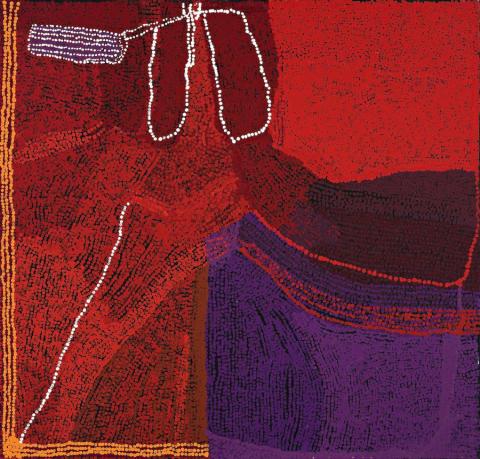UNTJU ALKATA, 2005
TOMMY WATSON
synthetic polymer paint on linen
158.0 x 165.5 cm
inscribed verso: artist's name and Agathon Gallery cat. 15
Agathon Gallery, Melbourne
Private collection, Amsterdam
McGregor, K., Geissler, M., and Gregorini, F., Yannima Pikarli Tommy Watson, Macmillan Press, Melbourne, 2011, p. 111 (illus.)
Tommy Watson began painting in 2001 at a time when Aboriginal art was being recognised internationally as the most exciting contemporary art movement of the new millennium. Watson created 'works of immense visual power and complexity distinguished by an outpouring of magical colours'.1 His application of minimal colourfields spreading across the canvas recall ancestral stories of his Pitjantjatjarra heritage, originating from one of the nation's most arid and unforgiving regions. In Untju Alkata, Watson washes the surface of the canvas with blocks of colour that as Judith Ryan notes have an 'appeal ... that relates to the spatial complexities and distinctively tactile topographical variations described through the use of luscious, thickly dotted layers of bright pink, whites, yellows, oranges, reds, purples, blues and greens. In expressing the intensity of his relationship to "Country", Watson infers the potent and mysterious dimensions of his sacred world by sinking the visual elements into what becomes a "prolonged meditation on art and life, space, time, perception and the nature of reality itself".'2
1. Ryan, J., Colour Power: Aboriginal Art post 1984, National Gallery of Victoria, Melbourne, 2005, p. 112
2. Ibid.
